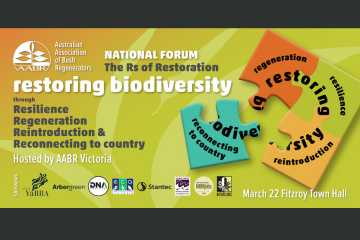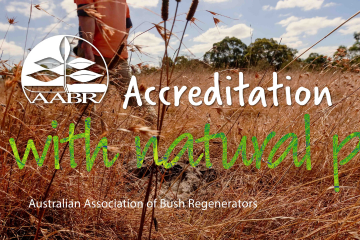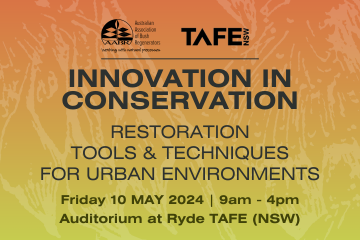President’s Perspective – Peter Dixon
Peter Dixon, AABR President | president@aabr.org.au | 0478 741 111

Bush Regeneration is one of those sweet professions or activities where practitioners can be satisfied that they are engaged in a positive thing. There are few moral or ethical dilemmas and I can’t think of any regenerator, volunteer or paid, that would not be proud about telling others about what they do.
One area where angst can arise is the scale of pace of what we do in comparison to the ongoing destruction of habitat, either through land clearingor through gradual decline from ongoing poor ecological management.
We are constantly bombarded with horrifying figures about deforestation and habitat clearing, especially in NSW and Queensland. A recent Guardian article shows that over 2m ha of bush have been cleared in Queensland alone in the last 5 years. Across Australia, the largest single purpose for clearing of native habitat has been for agriculture.
There are a few interesting points to consider here. Some of the best private land habitat managers in Australia are farmers, so we know that agriculture and biodiversity can coexist. We also have the Landcare movement; one of the largest social and environmental movements in Australia and there are hundreds of thousands of farmers and rural landowners actively managing their land for biodiversity and restoration. On the down side, much of the land being cleared for agriculture is classified as ‘regrowth’… previously cleared land that has only been regenerating for a certain, legislated period of time.
To many involved in the restoration of ecosystems, clearing of regrowth is an irony. These areas are those that demonstrate a significant amount of resilience, often because they were only cleared relatively recently or have only had low levels of ongoing disturbance. Yet, while the government and other funders/resourcers ply (very appropriately!!) significant funds (yet orders of magnitude less than needed!!) into restoration of ecosystems, resilient or not, there is no coherent national strategy to research and map out what areas of ‘regrowth’ are needed to recover to create the core and connected habitats needed to preserve all of our species and ecological communities and to allow evolutionary (and climate necessary) processes to occur.
I won’t enter the debate about landholder responsibility here, and whether or not we should pay people/companies to not clear vegetation on their farms, but I will argue that a lot of regrowth would be an easy and relatively cheap avenue to reaching the 2030 Kunming Montreal targets, especially that by 2030 at least 30 per cent of areas of degraded terrestrial, inland water, and marine and coastal ecosystems are under effective restoration, in order to enhance biodiversity and ecosystem functions and services, ecological integrity and connectivity.
I acknowledge that there are many individual landholders allowing and managing regrowth and many programs from governments and NGOs to assist, encourage and fund this, but our biodiversity and extinction crises, mapped against cumulative impact, climate change and a surge in biosecurity emergencies means that we can’t continue with an underfunded, shotgun approach. There is a range of legislative and regulatory reform going on around Australia, with a range of new mechanisms to be rolled out. This could be positive, but we need our governments to ensure that there are a suite of mechanisms, that target the spectrum of those who would engage, from the altruistic to the financially mercenary in a strategic way, with sufficient resources so that we can demonstrably recover and maintain all of our native species.
What else is in AABR News 158
Upcoming AABR Events
- National Forum – The R’s of Restoration – 22/3/24, Fitzroy Town Hall, Vic
- Symposium – Innovation in Conservation – 10/5/24, Ryde TAFE Auditorium, NSW
- Walk& Talk – How soils influence fauna and flora -14/4/24 , Ku-ring-gai Chase National Park, NSW
- AABR Fest 2024: The Return of the Regenerators! 24-26 May, Kariong Scout Camp
AABR News
The Business of Bush Regen
- Restoration of Littoral Rainforest – Scott Meier
- Why soil health matters in restoration, and how bush regenerators can better connect soil health to their restoration outcomes – Lachlan Curran
- Art telling restoration stories – a brief conversation with Tein McDonald
- The UN Decade on Ecosystem Restoration – How are we tracking? -Ray Thomas
- Books – ACT Weeds Manual –Vera Kurz
Workshops & Research
- Workshop 4: How does our landscape respond after fire?
- Research explores health and wellbeing benefits of landholders in private land conservation
- Interested in joining an AABR Mapping Forum?







Leave A Comment